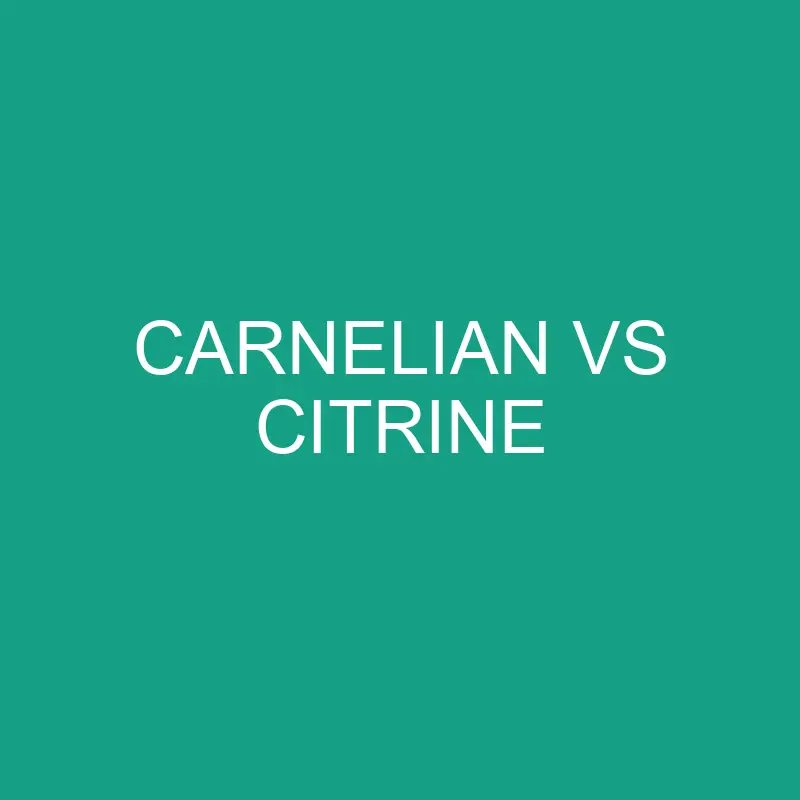Carnelian and citrine are both beautiful gemstones, but they differ in terms of composition, color, and metaphysical properties. Let’s explore the distinctions between carnelian and citrine:
Post Contents
Carnelian:
Origins and Geology:
- Composition: Carnelian is a variety of chalcedony, which is a type of microcrystalline quartz. Its distinctive orange to reddish-brown color is caused by the presence of iron oxide.
Physical Properties:
- Color: Carnelian ranges in color from pale orange to deep red-brown. It may also exhibit shades of yellow and brown.
- Transparency: Carnelian is typically translucent to opaque.
- Luster: It has a vitreous (glassy) to waxy luster.
- Mohs Scale: Carnelian has a hardness of 6.5 to 7 on the Mohs scale.
Uses:
- Jewelry: Carnelian is widely used in jewelry, often cut into cabochons, beads, and cameos.
- Carvings: It is used for carving ornamental items, cameos, and small sculptures.
Metaphysical Properties:
- Energizing: Carnelian is associated with energy, courage, and motivation.
- Sacral Chakra: It is believed to align with the sacral chakra, promoting creativity and passion.
Citrine:
Origins and Geology:
- Composition: Citrine is a variety of quartz, and its color is caused by traces of iron impurities. Natural citrine is relatively rare, and much of the citrine on the market is heat-treated amethyst or smoky quartz.
Physical Properties:
- Color: Citrine ranges from pale yellow to deep amber or brownish-yellow. It can be transparent or translucent.
- Luster: It has a vitreous (glassy) luster.
- Mohs Scale: Citrine has a hardness of 7 on the Mohs scale.
Uses:
- Jewelry: Citrine is popular in jewelry, especially in faceted gemstone cuts for rings, necklaces, and earrings.
- Carvings: It is used for carved items and sculptures.
- Ornamental Items: Citrine is also used in ornamental items like vases and bowls.
Metaphysical Properties:
- Abundance and Prosperity: Citrine is often associated with abundance, prosperity, and positive energy.
- Solar Plexus Chakra: It is believed to align with the solar plexus chakra, promoting confidence and personal power.
Carnelian vs. Citrine: Key Differences
Color:
- Carnelian: Orange to reddish-brown, with shades of yellow and brown.
- Citrine: Pale yellow to deep amber or brownish-yellow.
Transparency:
- Carnelian: Translucent to opaque.
- Citrine: Transparent to translucent.
Mohs Scale:
- Carnelian: Hardness of 6.5 to 7.
- Citrine: Hardness of 7.
Uses:
- Carnelian: Used in jewelry and carvings.
- Citrine: Widely used in jewelry, carvings, and ornamental items.
Metaphysical Associations:
- Carnelian: Associated with energy, courage, and the sacral chakra.
- Citrine: Associated with abundance, prosperity, and the solar plexus chakra.
Conclusion:
Carnelian and citrine are both appealing gemstones with warm, vibrant colors. Carnelian, with its orange to reddish-brown tones, is associated with energy and creativity. Citrine, with its yellow to amber hues, is often linked to abundance and positive energy. When choosing between carnelian and citrine, considerations might include personal preferences in terms of color, the metaphysical properties one is drawn to, and the desired use (jewelry, carvings, or ornamental items). Both gemstones contribute to the diversity and beauty of the gemstone world.
